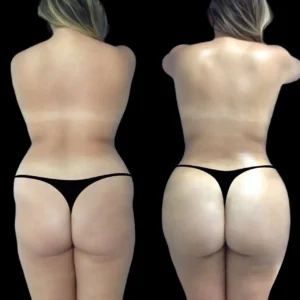In a world where we spend approximately 90% of our time indoors, the quality of the air we breathe has never been more critical. As pollution levels rise and allergies become increasingly common, creating a sanctuary within our homes is essential for maintaining optimal health and well-being. Enter the balanced ventilation system—a game-changer in indoor air quality that ensures you can enjoy fresh air without compromising comfort or energy efficiency.
What is a Balanced-Ventilation System?
A balanced-ventilation system is a type of mechanical ventilation system that uses both supply and exhaust fans to bring in fresh air and expel stale air from a building. This method of ventilation ensures that there is a constant flow of clean air into the indoor space, while also removing pollutants and moisture from the air.
One of the main benefits of a balanced-ventilation system is its ability to maintain proper air balance within a building. This means that an equal amount of fresh air is being brought in as stale air is being removed, creating a healthy equilibrium. This is important because an imbalance in airflow can lead to negative pressure or positive pressure within a building, which can cause problems such as drafty rooms, excessive humidity, or even backdrafts from combustion appliances.
A balanced-ventilation system is an essential component of any building’s HVAC (heating, ventilation, and air conditioning) system. It not only maintains proper air balance and improves indoor air quality but also helps save energy and prevents moisture-related issues. To ensure the best performance and efficiency of your balanced-ventilation system, it is crucial to have it installed and maintained by a professional HVAC technician.
How Does a Balanced-Ventilation System Work?
A balanced-ventilation system operates by ensuring a consistent exchange of indoor and outdoor air. It utilizes two fans—one for exhausting stale air and another for bringing in fresh air. This dual process maintains equilibrium, preventing pressure imbalances within your home. Air is drawn from various areas inside the house, like kitchens and bathrooms where humidity or odors accumulate. Simultaneously, clean outdoor air enters through designated vents, filtering out pollutants before reaching living spaces.
What sets this system apart is its ability to recover energy. Some models incorporate heat exchangers that transfer warmth from outgoing air to incoming air during colder months. This efficiency reduces heating costs while maintaining comfort levels indoors. Moreover, such systems can adapt based on environmental conditions. Sensors might adjust airflow rates according to temperature or humidity levels outside, ensuring optimal performance year-round without sacrificing indoor climate quality.
The Benefits of a Balanced-Ventilation System for Indoor Air Quality
A balanced-ventilation system significantly enhances indoor air quality by providing a steady flow of fresh outdoor air while simultaneously exhausting stale, contaminated air. This exchange helps to dilute pollutants and allergens that can accumulate in enclosed spaces. One of the standout benefits is its ability to regulate humidity levels. Maintaining optimal moisture reduces mold growth and prevents discomfort associated with dampness.
Moreover, these systems are designed to filter incoming air, capturing dust particles, pollen, and other irritants before they enter living areas. Healthier breathing conditions can lead to improved overall well-being. Energy efficiency is another key advantage. Modern balanced-ventilation systems often incorporate heat recovery features, minimizing energy loss during ventilation processes while ensuring consistent temperatures indoors. By creating a healthier environment free from airborne contaminants, individuals experience fewer respiratory issues and better sleep quality as well.
The Role and Purpose of a Balanced-Ventilation System
A balanced-ventilation system plays a crucial role in maintaining the indoor air quality of a building. It is a mechanical ventilation system that brings in fresh outdoor air while simultaneously exhausting stale indoor air, creating a balanced exchange of air. This process ensures that the air inside the building remains clean, healthy, and comfortable for its occupants.
One of the main purposes of a balanced-ventilation system is to remove harmful pollutants and contaminants from the indoor environment. Every day, we are exposed to various airborne particles such as dust, allergens, and volatile organic compounds (VOCs), which can have adverse effects on our health if not properly filtered out. A balanced-ventilation system works by continuously circulating fresh outdoor air into the building while expelling polluted indoor air outside. This continuous flow of fresh air helps maintain a healthy balance between indoor and outdoor pollutants, improving overall indoor air quality.
Apart from regulating pollutants and moisture levels, a balanced-ventilation system also plays an essential role in controlling temperatures inside buildings. During summer months or in warmer climates where opening windows may not be feasible due to high pollen counts or outdoor noise pollution, using a balanced-ventilation system can provide effective cooling without compromising on indoor comfort levels. By bringing in cooler outdoor air while simultaneously exhausting warm stale indoor air, this type of ventilation maintains an optimal temperature inside buildings.
The Value of Choosing the Air Ventilation Unit
One of the main benefits of having an air ventilation unit is its ability to circulate fresh air throughout the space. Without proper ventilation, indoor air can become stale and stagnant, leading to a build-up of harmful pollutants such as dust, allergens, and VOCs (volatile organic compounds). These pollutants can have adverse effects on our respiratory system, causing allergies, asthma attacks, or even more serious health issues in the long run.
By continuously bringing in fresh outdoor air and removing stale indoor air, a ventilation unit helps maintain a balanced and healthy indoor environment. This is especially crucial in spaces that are tightly sealed for energy efficiency purposes. Without proper ventilation, these spaces can trap pollutants inside and create an unhealthy living or working environment.
Moreover, choosing an efficient ventilation unit can also significantly improve energy efficiency and save money on utility bills. A well-maintained ventilating system helps regulate temperature by removing excess heat or moisture from the building. This allows for better control over heating and cooling systems while reducing energy consumption.
The Common Types of Balanced-Ventilation Systems
Balanced-ventilation systems come in various types, each designed to optimize indoor air quality. One common type is the Heat Recovery Ventilator (HRV). It exchanges stale indoor air for fresh outdoor air while capturing heat from the outgoing air. This process helps maintain a comfortable temperature indoors during colder months.
Another popular option is the Energy Recovery Ventilator (ERV). Similar to HRVs, ERVs transfer energy between incoming and outgoing airflow but also manage humidity levels. This feature makes them ideal for humid climates where moisture control is essential.
Ducted balanced-ventilation systems utilize existing ductwork to distribute fresh air throughout your home efficiently. For smaller spaces, decentralized units can be installed directly into individual rooms, providing localized ventilation without extensive ducting. With these diverse options available, homeowners can choose a system that best fits their specific needs and preferences.
Tips for Proper Maintenance and Care of the System
Regular maintenance is key to keeping your balanced-ventilation system running smoothly. Start by checking and replacing filters every three months. Clean filters help maintain optimal airflow and improve indoor air quality. Inspect ductwork for any signs of dust or debris buildup. A clean system promotes efficient operation, ensuring that fresh air circulates throughout your space.
Don’t forget to examine the exhaust fans as well. They should be free from obstructions and functioning properly to remove stale air effectively. Schedule annual check-ups with a professional technician. This proactive approach can identify potential issues before they become costly repairs. Lastly, keep an eye on humidity levels in your home. Maintaining proper moisture balance not only supports the ventilation system but also enhances overall comfort indoors.
The Essential Role of Air Ventilation System
Air ventilation systems play a crucial role in maintaining good indoor air quality. They are responsible for the continuous flow of fresh air into enclosed spaces and the removal of stale air, along with pollutants and contaminants. This circulation of clean air is essential for both our health and the overall well-being of our indoor environment.
One of the primary functions of a ventilation system is to regulate temperature. Inadequate ventilation can lead to hot and stuffy conditions, while excessive ventilation can result in cold drafts. A balanced-ventilation system ensures that proper amounts of fresh outside air are brought in while maintaining a comfortable temperature inside.
Moreover, proper ventilation also helps control humidity levels. High humidity levels can cause mold growth, leading to respiratory issues and allergies. On the other hand, low humidity levels can cause dryness in the eyes, skin, and throat. A balanced-ventilation system helps maintain optimal humidity levels by replacing moist or humid air with fresh dry air.
Additional Strategies for Improving Indoor Air Quality
Improving indoor air quality requires a multifaceted approach. Start with regular dusting and vacuuming to eliminate allergens. Use a vacuum cleaner equipped with a HEPA filter for maximum effectiveness. Incorporate houseplants that naturally purify the air, such as spider plants or peace lilies. These green additions not only enhance aesthetics but also help absorb toxins. Consider using air purifiers equipped with activated carbon filters. They can trap airborne pollutants and improve overall freshness in your living space.
Ensure proper humidity levels by utilizing dehumidifiers when necessary. High humidity can lead to mold growth, while low humidity may cause discomfort and respiratory issues. Finally, limit the use of harsh chemicals for cleaning products and opt for natural alternatives instead. This simple shift can significantly reduce indoor pollution while maintaining a healthy environment.
Conclusion
Investing in a balanced ventilation system is an important step towards enhancing indoor air quality. With the modern lifestyle leading to tighter homes, ensuring proper airflow has never been more crucial. This system not only helps eliminate contaminants but also balances humidity levels and replaces stale air with fresh oxygen. Moreover, clean air contributes significantly to our overall well-being. It can help prevent respiratory problems, allergies, and other health issues associated with poor indoor environments. A balanced-ventilation system ensures that you breathe easy while indoors.
FAQs
What Is A Balanced-Ventilation System?
A balanced-ventilation system is a type of mechanical ventilation that provides equal amounts of fresh air and exhaust air to maintain proper indoor air quality. It involves the use of two separate systems – one for bringing in fresh outdoor air and another for expelling stale indoor air.
How Does A Balanced Ventilation System Work?
The system works by using fans or blowers to bring in fresh outdoor air through one set of ducts, while simultaneously expelling stale indoor air through another set of ducts. This creates a continuous flow of fresh air into the building, which helps to dilute and remove any pollutants or contaminants present in the indoor environment.
Why Is It Important To Have A Balanced-Ventilation System?
Having a balanced-ventilation system is crucial for maintaining good indoor air quality. Without proper ventilation, buildings can become stuffy and stagnant, leading to an increase in levels of harmful chemicals, mold spores, and other pollutants. These can cause health issues such as allergies, asthma, headaches, fatigue, and respiratory problems.
| Related Business Listings |
| Contact Directory |
| Local Business Profiles |


